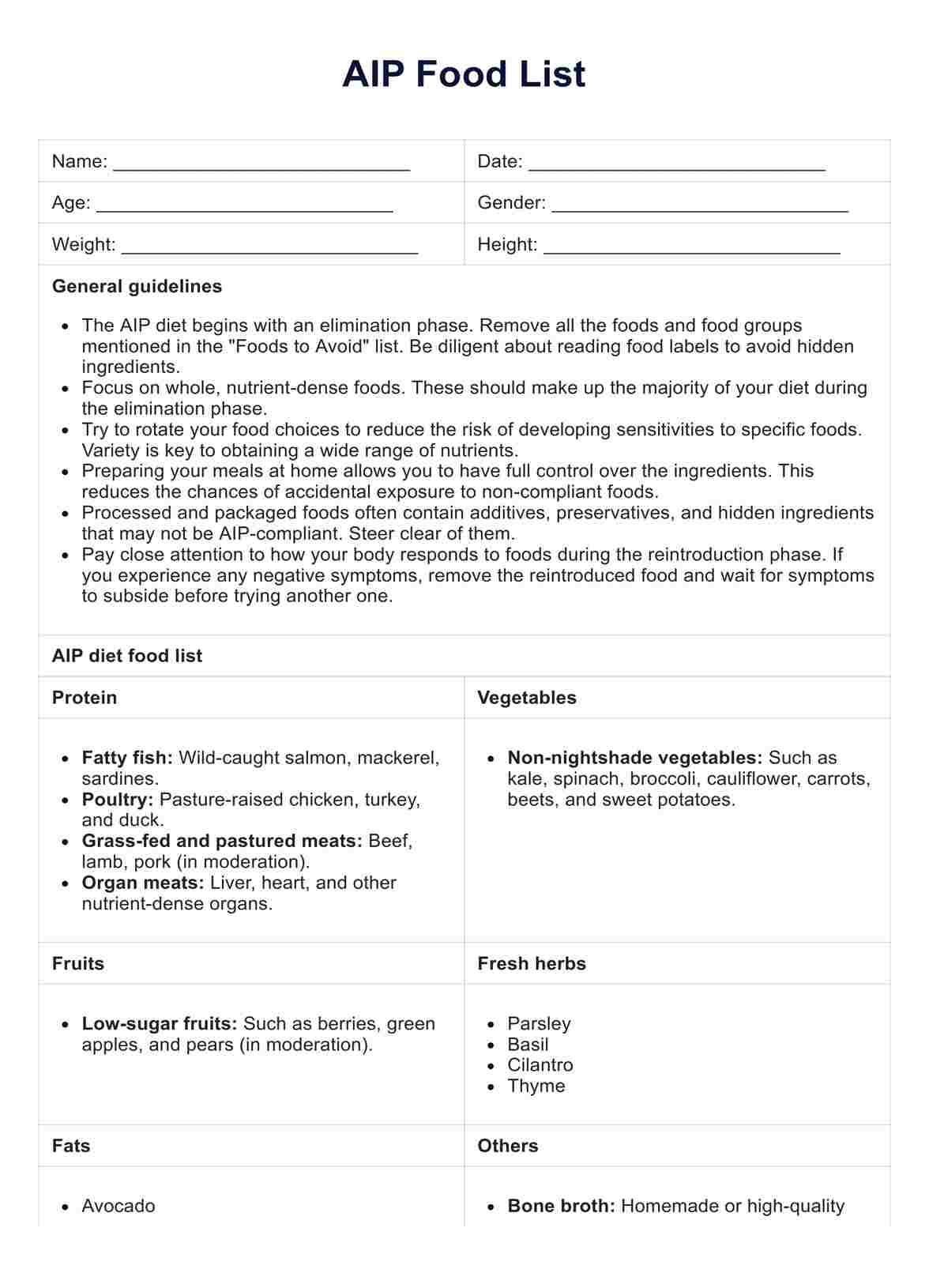What is an AIP Diet Food List?
The Autoimmune Protocol (AIP) is a diet plan to reduce inflammation, pain, and other symptoms associated with autoimmune diseases. AIP eliminates foods that cause inflammation and damage the gut lining, including grains, legumes, dairy, refined sugars, and processed oils.
The focus is on consuming nutrient-dense foods that promote gut health and reduce inflammation, such as lean meats, vegetables, fruits, and healthy fats. It is designed to help individuals with autoimmune conditions manage their symptoms and potentially lead to a reduction in disease activity.
An AIP Diet Food List can help individuals with autoimmune diseases navigate the restrictions and follow the diet plan. It outlines approved and restricted foods, making it easier for clients to plan their meals and grocery shopping.
Moreover, this list can be a starting point for individuals who want to incorporate anti-inflammatory foods into their diet, even if they do not have an autoimmune condition.












